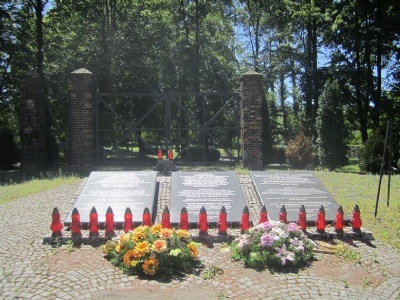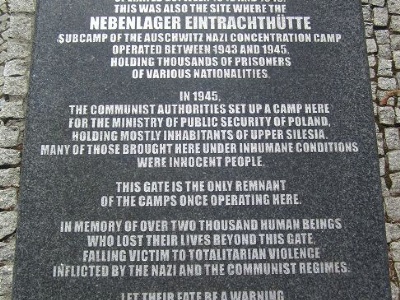Eintrachthütte
In 1942, a Jewish labor camp was established in a steel mill in Eintrachthütte (polish Swietochlowice), about five kilometers west of Katowice. In May 1943, the camp was subordinated to Auschwitz and consisted of several wooden barracks for prisoners while the camp administration was housed in a brick building. The entire camp area was surrounded by a double barbed wire fence and strategically placed guard towers. Initially, about 200 Jews and 300 Soviet prisoners of war were imprisoned, the number of prisoners increased when about 400 French forced labor prisoners were sent to the camp. In 1944, about 1,400 Jewish prisoners were placed in the camp. Regardless of the number of prisoners and their origin, they were used as slave workers in a nearby steel mill where they manufactured artillery guns. Conditions were harsh, lack of food, medicine and supplies. Accommodation were inadequate and arbitrary behavior of the guards meant that death was a daily routine. Those who were no longer considered to be able to work were sent back to Auschwitz and murdered. In 1944, the camp was evacuated as the Soviet Red army approached and the prisoners were sent to Mauthausen. The camp was liberated in the end of January, 1945.
Current status: Demolished with monument (2013).
Location: 50°16'46.19" N 18°54'03.07" E
Get there: Car.
Follow up in books: Kogon, Eugen: The Theory and Practice of Hell: The German Concentration Camps and the System Behind Them (2006).



After the camp was liberated, the communist regime used the camp to imprison suspected citizens, mainly from Oberschlesia. The only thing that remains of the camp today is the former camp gate and a washbasin that stands on a private plot on the former camp area.